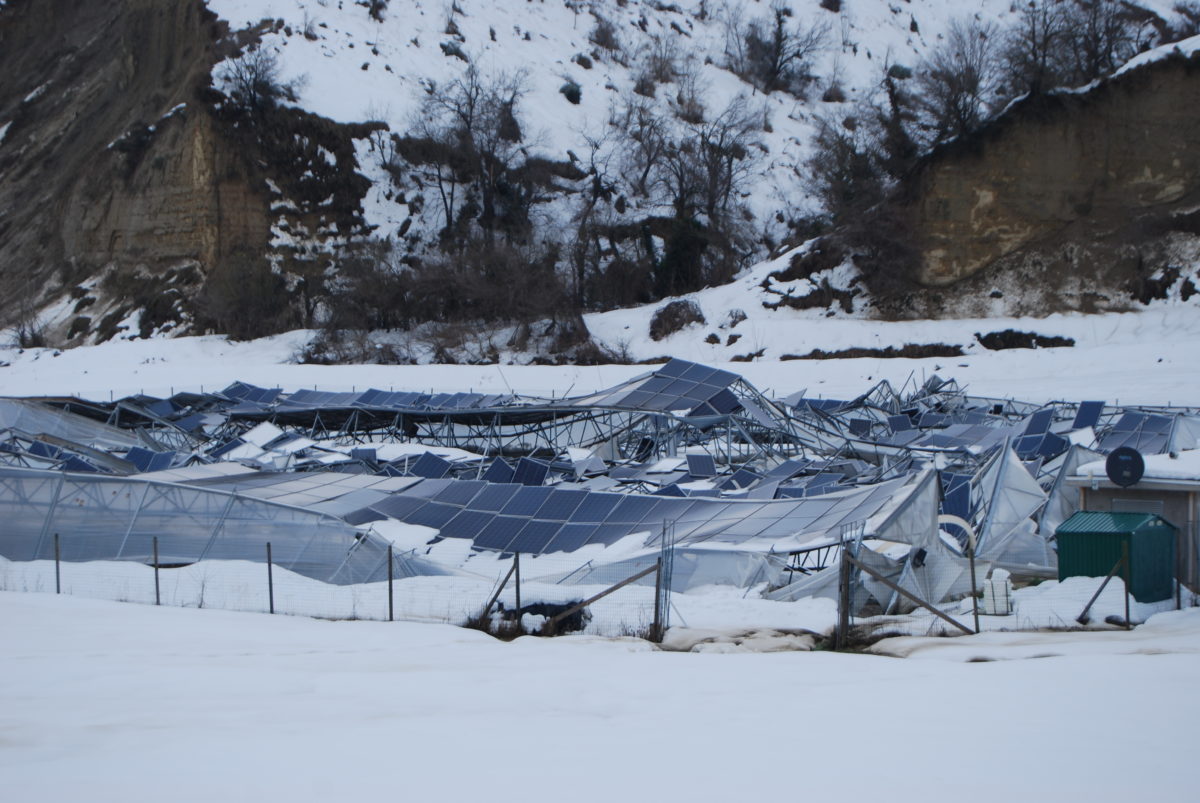Scientists at the U.S. Departments of Energy’s National Renewable Energy Laboratory (NREL) have assessed the cost of designing and building more natural disaster resistant PV systems.
The Solar Photovoltaics in Severe Weather: Cost Considerations for Storm Hardening PV Systems for Resilience report also seeks to identify the benefits of installing storm-hardened PV systems in ground-mounted and fixed-tilt rooftop arrays.
The researchers said toughened solar installations require high quality standards and are more expensive than conventional systems. The scientists warned tracker-mounted arrays, which are less durable to high wind than fixed-tilt panels and account for the majority of large scale solar plants being installed today, including in storm-prone regions, were not included in the analysis.
Measures
The study considered 13 PV storm-hardening measures, with the researchers warning the techniques did not constitute an exhaustive list.
The measures subjected to cost analyses were:
- Properly torqueing fasteners upon installation
- Using wedge-lock washers to lock fasteners
- Bolting modules directly to underlying racking
- Using marine-grade steel fasteners
- Using PV panels resistant to design wind loading
- Using a three, rather than two-framed rail system
- Mounting double-driven, rather than single-driven, steel pile supports
- Choosing closed-form, tubular frame elements instead of cold rolled steel support structures
- Installing a wind fence
- Enclosing electronic components against flooding and water saturation
- Installing electrical equipment on elevated pads
- Establishing well-designed and maintained drainage systems
- Taking pre and post-storm measures such as a torque audit of fasteners and drying and cleaning electrical systems
“It is important to perform a careful structural engineering analysis of the strength benefits of each measure, compared to their costs and how they can help a system meet its design wind loads,” said the NREL group. The scientists added, combining measures may be cheaper than applying each technique separately.
Combining all of the storm-proofing measures would account for around 51% of the estimated $1.06/W cost of a ground-mounted, 1 MW solar plant, according to the researchers, supplying $0.54/W of the expense. On solar rooftops, such measures would add only $0.18/W, or around 10%, of the estimated $1.83/W price of a 100 kW system, according to the paper.
“To be effective as a resilient power solution, though, the system needs to survive the weather event,” wrote the NREL group. “To survive, it must be designed, installed and maintained to a higher standard. While doing so will likely come with an increased cost, in many cases the benefits may outweigh the cost.”
This content is protected by copyright and may not be reused. If you want to cooperate with us and would like to reuse some of our content, please contact: editors@pv-magazine.com.




By submitting this form you agree to pv magazine using your data for the purposes of publishing your comment.
Your personal data will only be disclosed or otherwise transmitted to third parties for the purposes of spam filtering or if this is necessary for technical maintenance of the website. Any other transfer to third parties will not take place unless this is justified on the basis of applicable data protection regulations or if pv magazine is legally obliged to do so.
You may revoke this consent at any time with effect for the future, in which case your personal data will be deleted immediately. Otherwise, your data will be deleted if pv magazine has processed your request or the purpose of data storage is fulfilled.
Further information on data privacy can be found in our Data Protection Policy.